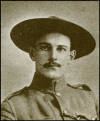Allegiance Canada Name Edward Gibson Service/branch Canadian Army | Rank Major Role Armed force officer Awards Victoria Cross | |
 | ||
Buried at St James Cemetery, Toronto Unit The Royal Canadian Dragoons
Canadian Machine Gun Corps Battles/wars Second Boer War
World War I Died June 18, 1948, Cobalt, Canada Education Lisgar Collegiate Institute Place of burial St. James Cemetery, Old Toronto, Canada Battles and wars Second Boer War, World War I | ||
Major Edward James Gibson Holland VC (2 February 1878, Ottawa – 18 June 1948, Cobalt, Ontario) was a Canadian recipient of the Victoria Cross, the highest and most prestigious award for gallantry in the face of the enemy that can be awarded to British and Commonwealth forces.
Contents
Early life
Holland was born in Ottawa, Ontario, and attended Lisgar Collegiate Institute. He joined the militia in 1895, at age 17. He became a commissioned officer in 1901, after earning his VC.
Military career
Holland was 22 years old, and a sergeant in The Royal Canadian Dragoons, Canadian Army during the Second Boer War. He was one of three men (the other were Lieutenants Hampden Zane Churchill Cockburn and Richard Ernest William Turner) from his regiment who were awarded the VC for actions on 7 November 1900 in South Africa. The citations were published in the London Gazette of 23 April 1901. His read:
Sergeant Holland did splendid work with his Colt gun, and kept the Boers off the two 12-pounders by its fire at close range. When he saw the enemy were too near for him to escape with the carriage, as the horse was blown, he calmly lifted the gun off and galloped away with it under his arm.
He received the VC from the Duke of Cornwall and York (later King George V) in Ottawa 21 September 1901 in a medal ceremony during the visit to Canada of the Duke and Duchess of Cornwall and York.
Holland later achieved the rank of Major and served in World War I with the Canadian Machine Gun Corps. His Victoria Cross is currently stored as part of the RCD Archives and Collection at CFB Petawawa, Ontario.
A plaque erected in 1969 at Trafalgar House on Argyle Street in Ottawa, Ontario is dedicated to Major Edward J.G. Holland, V.C., 1878-1948. "Born in Ottawa, Holland enlisted in 1899 in the 1st Canadian Mounted Rifles. He served in the Boer War and, on November 7, 1900, was a member of the small rearguard detachment assigned to cover a withdrawal from the Komati River. For his gallant action during this engagement Holland was awarded the Victoria Cross. His citation reads: “Sergeant Holland did splendid work with his Colt (machine) Gun, and kept the Boers off the two 12-pounders by its fire at close range. When he saw the enemy were too near him to escape with the gun-carriage, as the horse was blown, he calmly lifted the gun off and galloped away with it under his arm.”"
A brass plaque and print were erected by students and alumni in 1986 to Sergeant Edward James Gibson Holland, V.C. of the Royal Canadian Dragoons, a graduate of Lisgar Collegiate Institute who was awarded the Victoria Cross for bravery in action during the Boer War at Leliefontein, Komati River, South Africa on November 7, 1900.
.
Maj E.J.G. Holland VC armoury
The Canadian Department of National Defence named an armoury after Major Holland in Ottawa, Ontario. . The armoury located at 2100 Walkley Rd is home to 4 Ottawa area reserve units:
